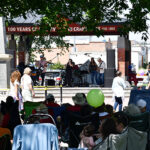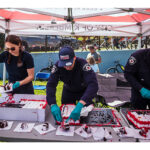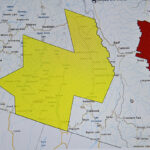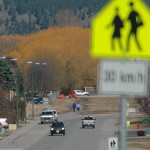Home »

Prescribed ER burn season approaching
André Chalabi has been busy prepping for the first prescribed burns of 2015 in the Columbia Trench.
Chalabi (pictured above) is Burn Boss with Wildfire Management Branch, (a division of the Ministry of Forests, Lands and Natural Resource Operations, (FLNRO), and works from the Southeast Fire Centre in Cranbrook.
“This spring we’re planning one ecosystem restoration burn, if weather and air venting conditions permit,” Chalabi said. “We’ve been prepping the ground to protect values like fence-lines and power poles, and we’ve machine-guarded the northeast end of the site.”
The Cherry Creek North and South sites are part of the St. Mary Pasture, an area about 10 kilometres west of Kimberley, just south of Highway 95A. The prescribed burn treatment will tie into last fall’s Artesian Pasture burn to create a landscape mosaic of treated areas along with fuel reduction around the Wildland Urban Interface. See ecosystem restoration map.
This ecosystem restoration burn is the follow-up to treatments that started in 2009. Mechanical and manual thinning removed much of the larger size fuels on site. Now the challenge is to wait until there are enough grassy fuels to carry a low-intensity burn, and that conditions are correct so the smoke vents up and out of the valley.
Chalabi said the area is valued for ungulate winter range, badger and Lewis’s woodpecker habitat, domestic grazing and plant diversity. “As well, this burn unit helps ‘fire-harden’ the landscape around Kimberley. Reduced fuel mean reduced wildfire intensity and safer communities.”
Chalabi wants to get the word out: “If you see smoke in the next few weeks, please know our crews are doing the best we can to ensure the burns are safe and effective.
“The burns help rejuvenate the site’s natural fire-adapted shrubs and grasses,” he said, “they maintain or enhance diversity, wildlife habitat and community safety.”
Although this winter has seen below-average snowpack, the site is currently not quite ready to burn.
“The ground is thawing,” Chalabi said. “But there are still snow patches scattered through the pasture.”
His best prediction for the burn is sometime in early April.
“When we have the perfect ‘burn window’—the set of conditions we need to proceed—we’ll be ready to do the burn. We’ll have ground and helicopter ignition crews on the job.”
Funding for this prescribed burn is provided by the B.C. Government’s Land Based Investment program and the Province of British Columbia Wildfire Management Branch.
Visit www.trench-er.com to learn about ecosystem restoration in the Trench.
The Rocky Mountain Trench Ecosystem Restoration Program (Trench ER Program)
– A successful partnership of government, industry and the public since 1998.
– Long-term goal is to restore grasslands and open forests in the East Kootenay/Upper Columbia Valley to their former fire-maintained condition.
– Treatments include thinning forest ingrowth and re-introducing fire to the landscape via controlled burns.
– Restoration takes place from Radium Hot Springs to the U.S. border on Crown land, in provincial and national parks, on private conservation properties and First Nations reserves.
– Benefits of restoring grasslands and open forests: Enhances biodiversity; restores habitat for species at risk; improves natural grazing for domestic cattle, elk, deer and bighorn sheep; improves forest health; and reduces the risk of severe wildfire.
Rocky Mountain Trench Ecosystem Restoration Program







